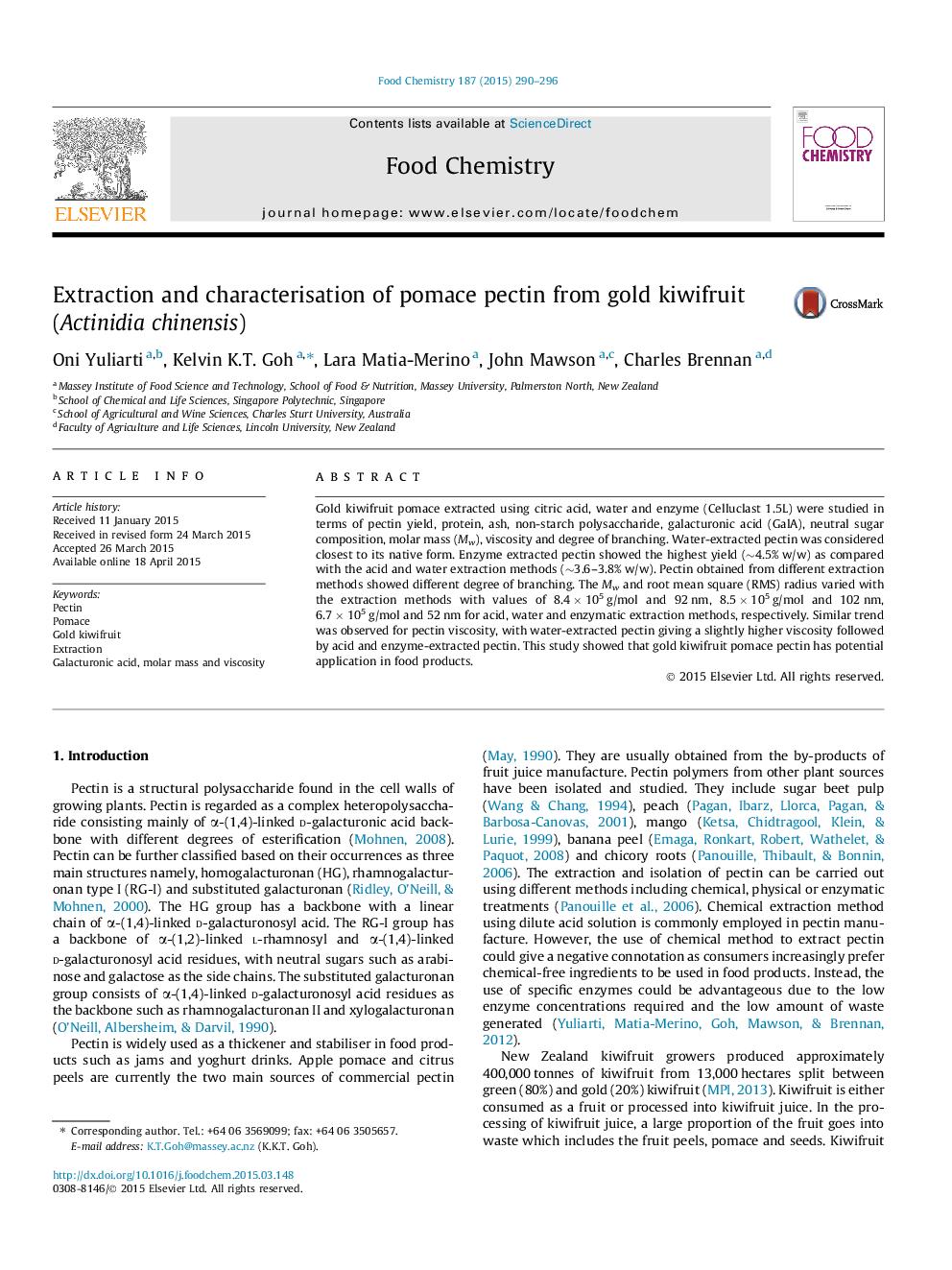| Article ID | Journal | Published Year | Pages | File Type |
|---|---|---|---|---|
| 7591112 | Food Chemistry | 2015 | 7 Pages |
Abstract
Gold kiwifruit pomace extracted using citric acid, water and enzyme (Celluclast 1.5L) were studied in terms of pectin yield, protein, ash, non-starch polysaccharide, galacturonic acid (GalA), neutral sugar composition, molar mass (Mw), viscosity and degree of branching. Water-extracted pectin was considered closest to its native form. Enzyme extracted pectin showed the highest yield (â¼4.5%Â w/w) as compared with the acid and water extraction methods (â¼3.6-3.8%Â w/w). Pectin obtained from different extraction methods showed different degree of branching. The Mw and root mean square (RMS) radius varied with the extraction methods with values of 8.4Â ÃÂ 105Â g/mol and 92Â nm, 8.5Â ÃÂ 105Â g/mol and 102Â nm, 6.7Â ÃÂ 105Â g/mol and 52Â nm for acid, water and enzymatic extraction methods, respectively. Similar trend was observed for pectin viscosity, with water-extracted pectin giving a slightly higher viscosity followed by acid and enzyme-extracted pectin. This study showed that gold kiwifruit pomace pectin has potential application in food products.
Keywords
Related Topics
Physical Sciences and Engineering
Chemistry
Analytical Chemistry
Authors
Oni Yuliarti, Kelvin K.T. Goh, Lara Matia-Merino, John Mawson, Charles Brennan,
